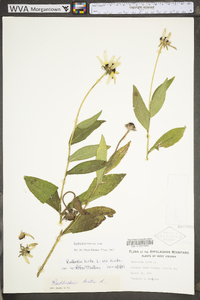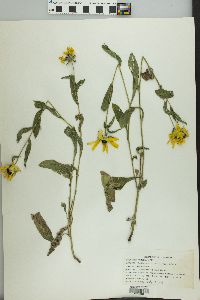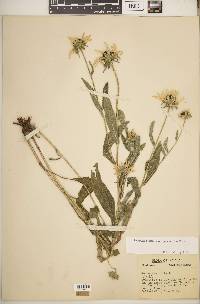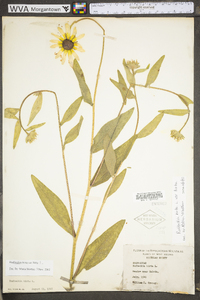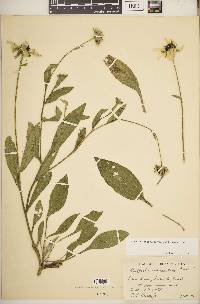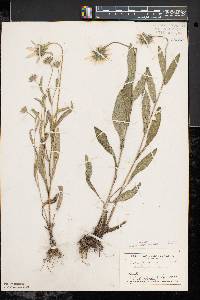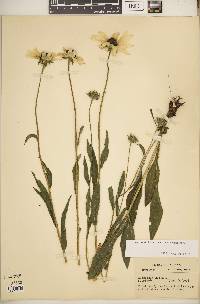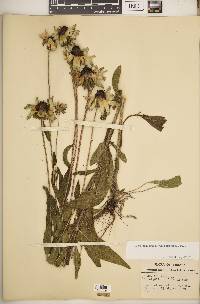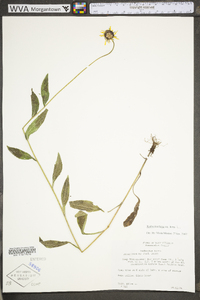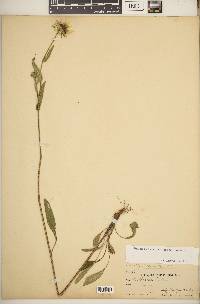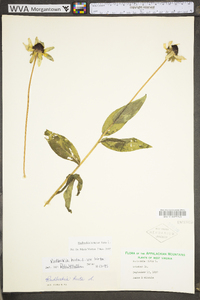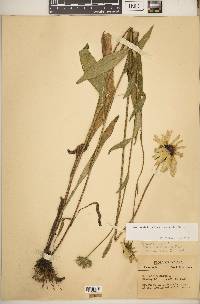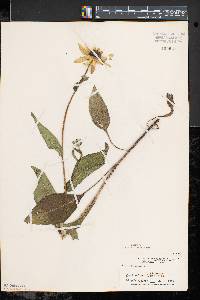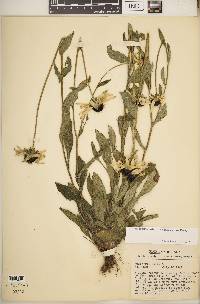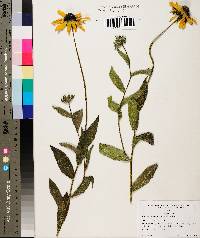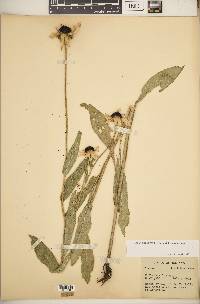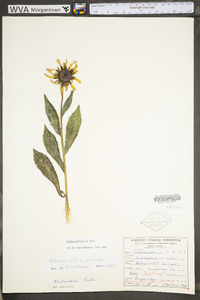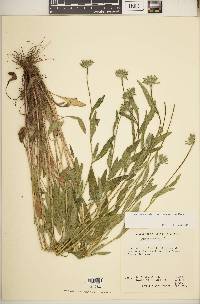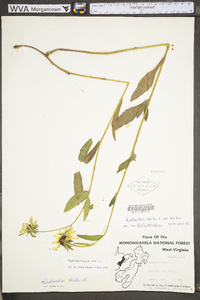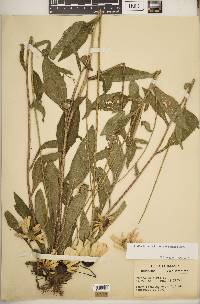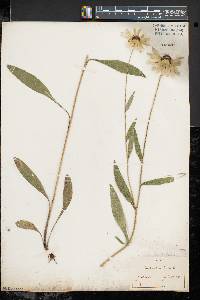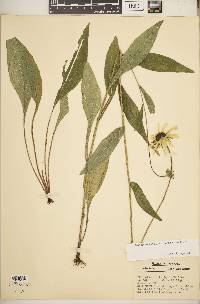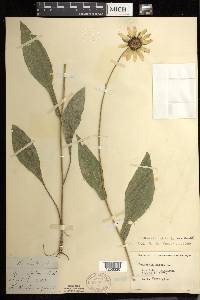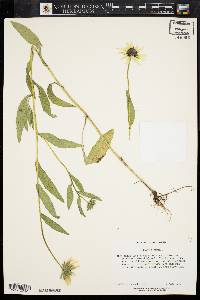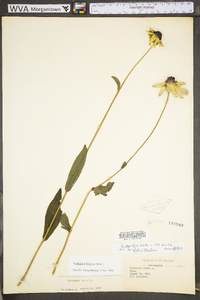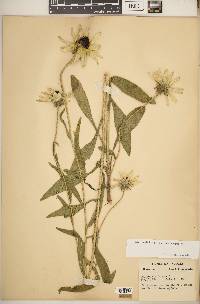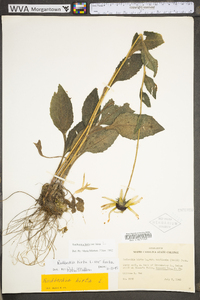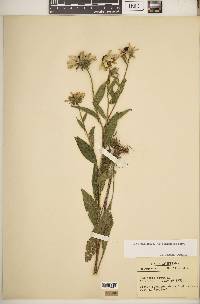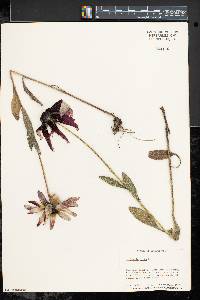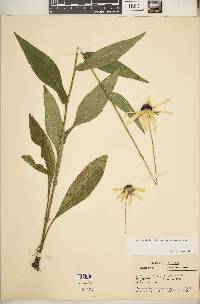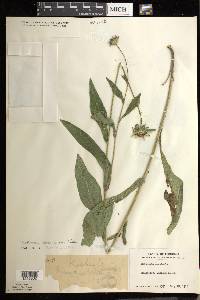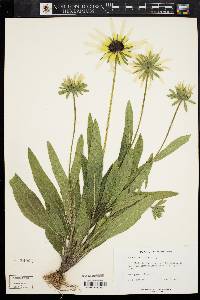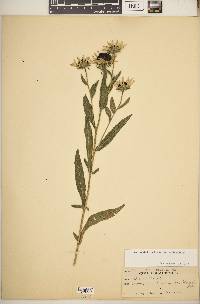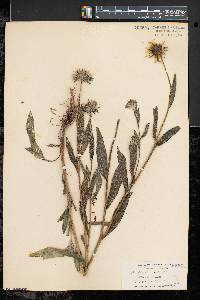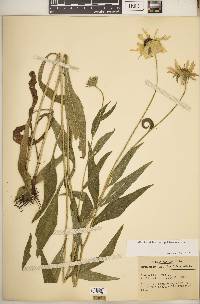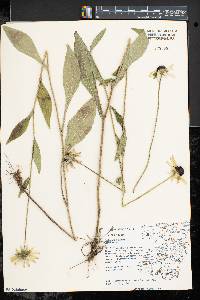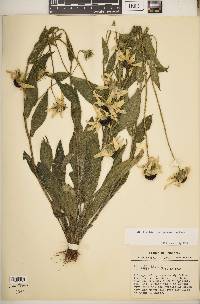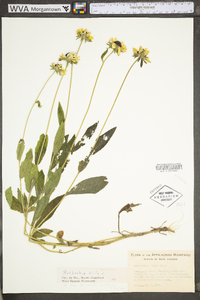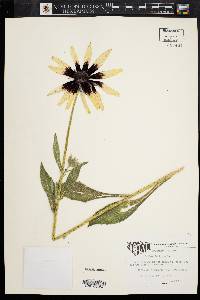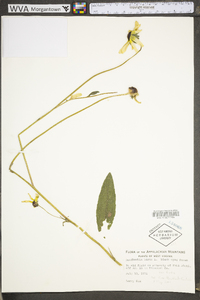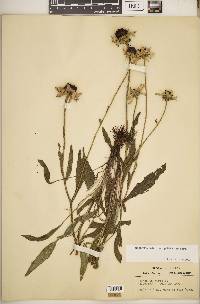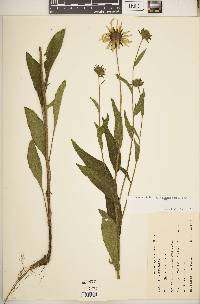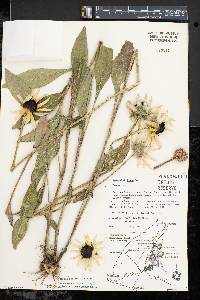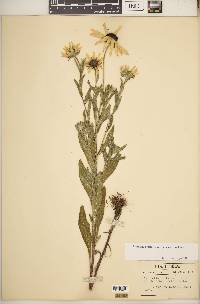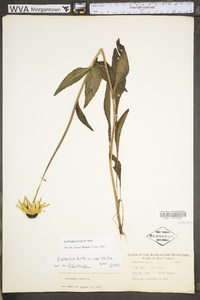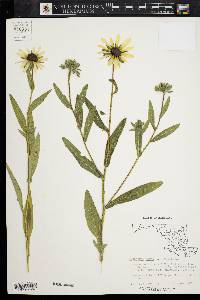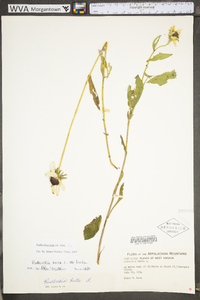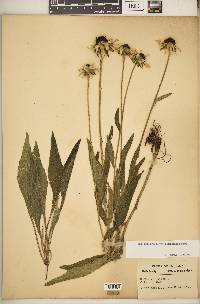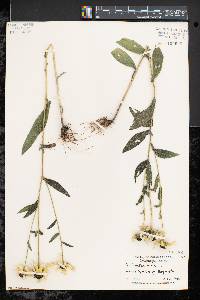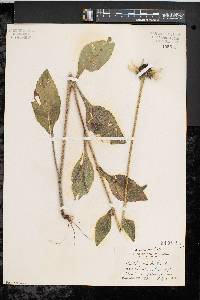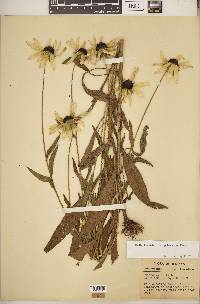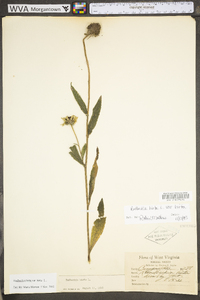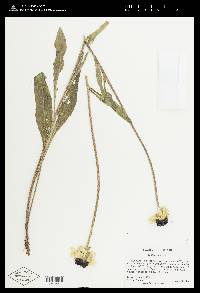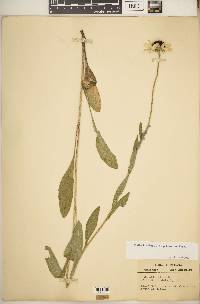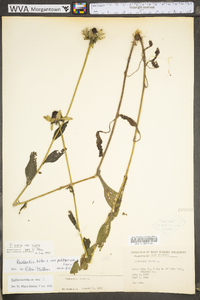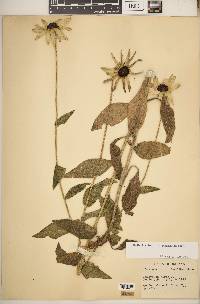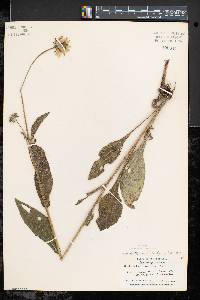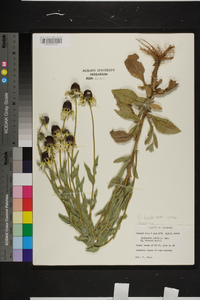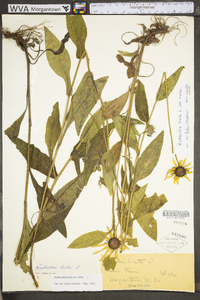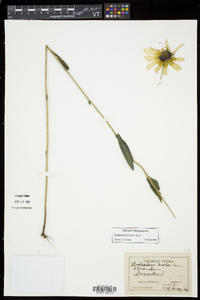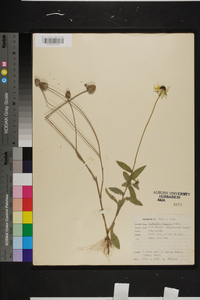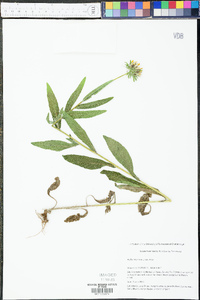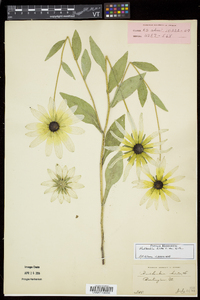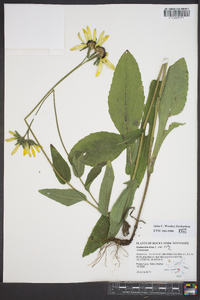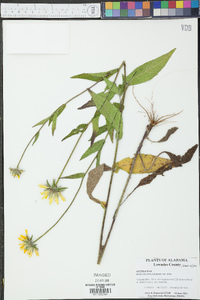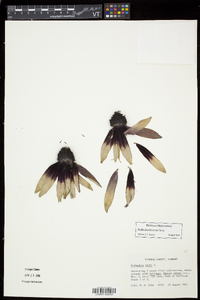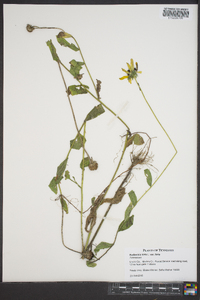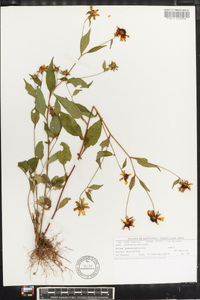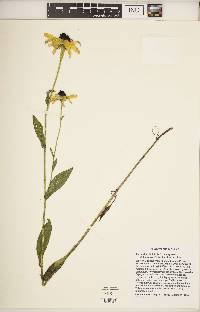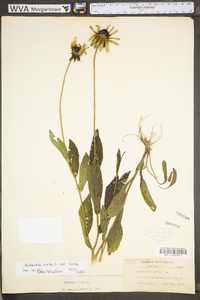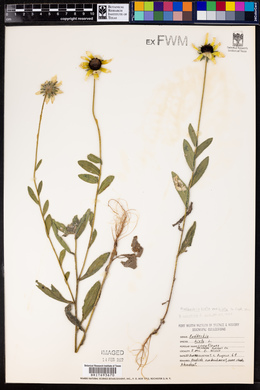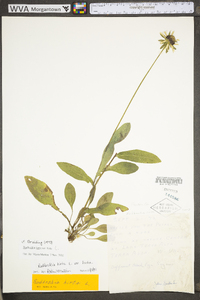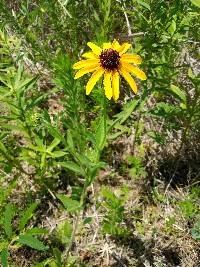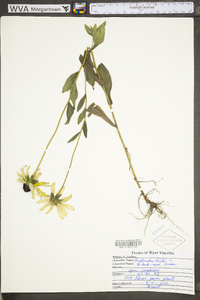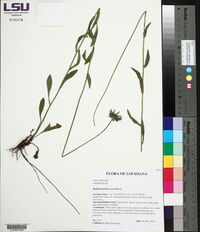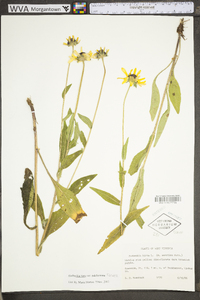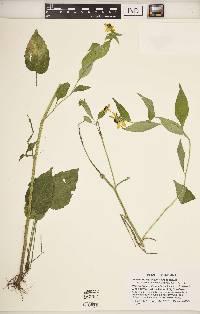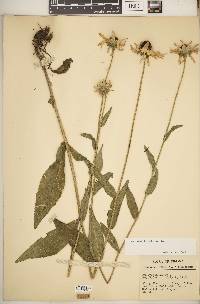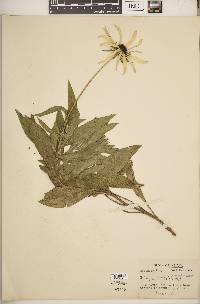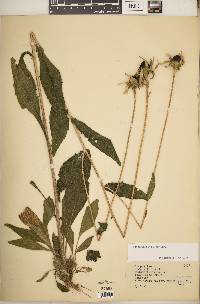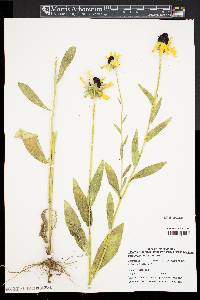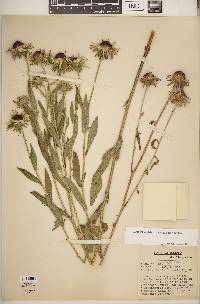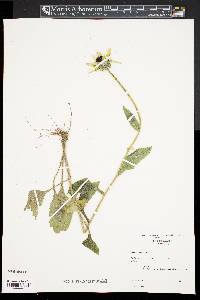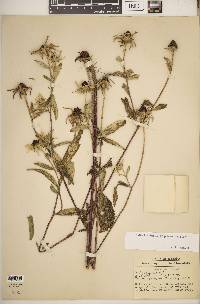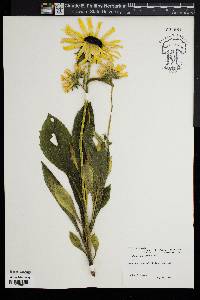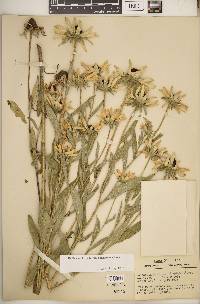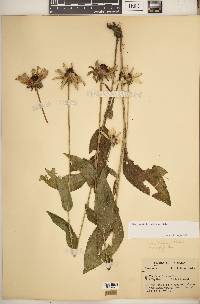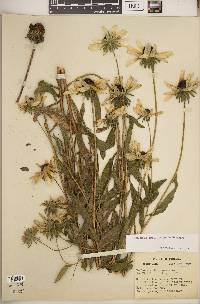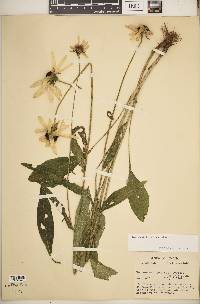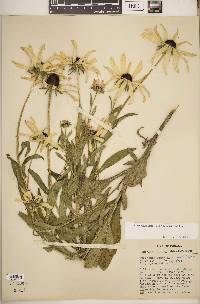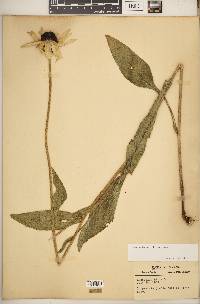Rudbeckia hirta var. hirta
|
|
|
|
Family: Asteraceae
Black-Eyed-Susan
[Rudbeckia serotina f. annulata (Clute) Fernald & B.G. Schub, moreRudbeckia serotina f. homochroma (Steyerm.) Fernald & B.G. Schub., Rudbeckia serotina f. tubuliformis (Burnham) Fernald & B.G. Schub., Rudbeckia serotina f. viridiflora (Burnham) Fernald & B.G. Schub.] |
Biennials or perennials. Stems branched mostly beyond mid heights, leafy ± throughout. Leaves: basal blades broadly ovate to broadly elliptic, 2.5-7 cm wide (lengths mostly 2 times widths); cauline blades lanceolate, ovate, or pandurate; margins coarsely toothed; faces hirsute to hispid. Peduncles less than 1/3 plant heights. 2n = 38. Flowering spring-fall. Open woodlands, fields, roadsides; 30-300 m; Ala., Ark., Conn., Del., Ga., Ill., Ind., Ky., Maine, Md., Mass., Mich., Miss., N.H., N.J., N.Y., N.C., Ohio, Pa., S.C., Tenn., Vt., Va., W.Va. Variety hirta grows mostly from the Appalachian highlands to Illinois. A report of var. hirta from Ontario has not been confirmed.
From Flora of Indiana (1940) by Charles C. Deam This species I am regarding as a species complex. The plants in our area are variable. Some are annual and flower mostly in June and July; these probably belong to the typical form. They are found in all parts of the state and are more or less frequent in both the glaciated and unglaciated areas. They are usually found in fallow fields, prairie habitats, and open black oak woods and along roadsides and railroads. I have found them in acid marshes and once in great numbers on the marl border of a lake. It is to be noted that the border of the lake was more than 100 feet wide and the plants covered about an acre. Those that grew in the moist part of the border were simple, usually bearing but one head while those on the beach margin where it was dry were branched and had many heads. These early flowering plants also vary in the size and shape of the leaves and in the color of the rays. Miss Edna Banta found a specimen in Jefferson County which I determined as Rudbeclkia bicolor, overlooking the fact that this species sometimes has flowers with the base of the rays a maroon color. I am now referring her specimen to Rudbeckia hirta. The bracts of this form are mostly 10-12 mm long, rarely one up to 20 mm long. The rays are mostly 20-35 mm long. The heads are on long peduncles and well developed ones are 15-22 mm wide. On September 26, 1932, I was collecting along the roadside near Blocher in Jefferson County and my attention was directed to large flowering specimens of this species. The date of flowering and the mammoth size of the specimens attracted my attention. I measured the longest ray of the specimen I collected and it was 57 mm long. I dug several plants, brought them home, and planted them in our garden where they have been ever since. I find that they are perennial and in cultivation they are very prolific. In 1936 I made 12 full specimens from one plant. The plants have long root leaves, the blades tapering at both ends, 3-5 cm wide and about 15 cm long, on petioles 10-20 cm long. The heads are mostly 15-18 mm wide, with involucral bracts 10-20 mm long and are on long petioles except one bushy plant which has the many heads on short petioles. Here in our garden this plant begins to bloom about the middle of August and continues until killing frost. I have tried to find the correct name for my plants but have failed to satisfy myself. Fernald (Rhodora 29: 458. 1937) published a key to Rudbeckia hirta L. which I am not able to fit to our plants. He regards the typical form of the species as having the "pubescence of the lower leaf-surface variously spreading, with broad open glabrous areas between the conspicuous green bulbous bases of the trichomes." He refers to Rudbeckia hirta var. sericea plants of this complex that have the "pubescence of both leaf-surfaces closely appressed (or chiefly so), the crowded hairs chiefly parallel with the midrib, with minute or obscure bulbous bases." He does not give the range of this variety but I can not make it apply to our plants because Moore's original description calls for plants with subulate involucral bracts three fourths of an inch (20 mm) long, while the bracts of our plants are not subulate and are mostly 10-12 mm long. I find no description to fit my Jefferson County plants and I regard them unique, requiring further study to place them. I have had all our species of Rudbeckia under cultivation for several years and this autumnal form of this species baffles me. I hope to continue and to increase my observation of it. …… Indiana Coefficient of Conservatism: C = 2 Wetland Indicator Status: FACU |


